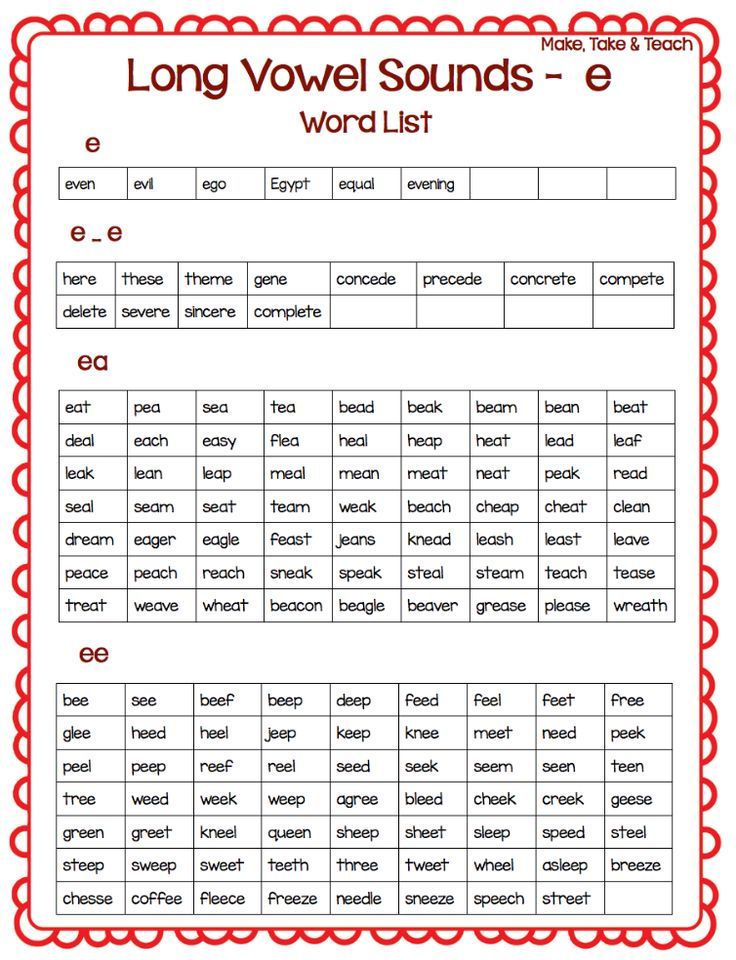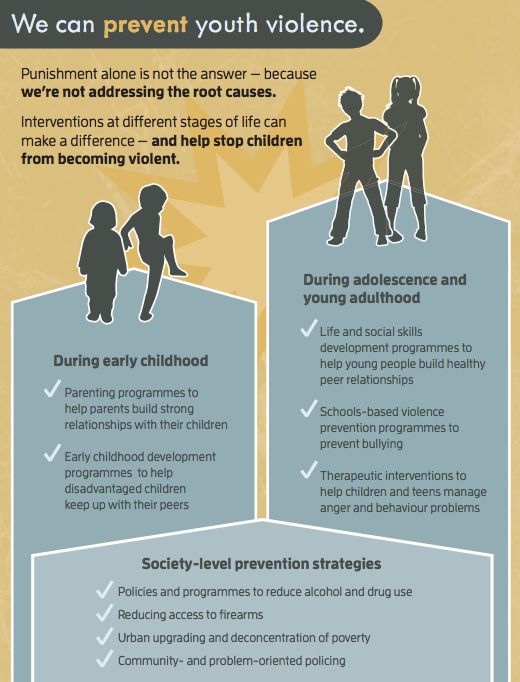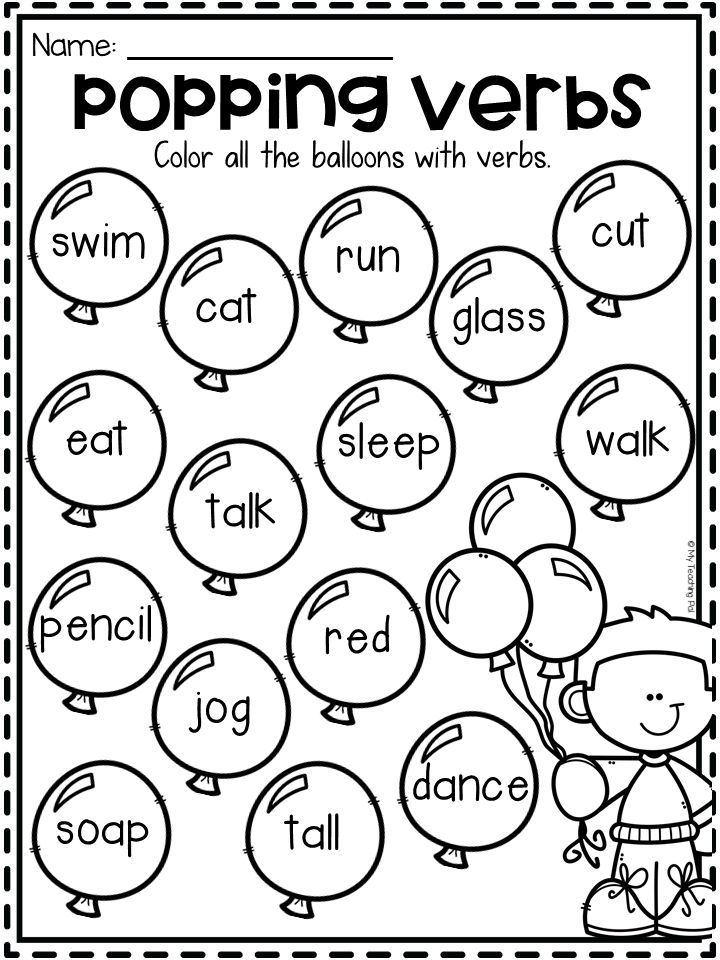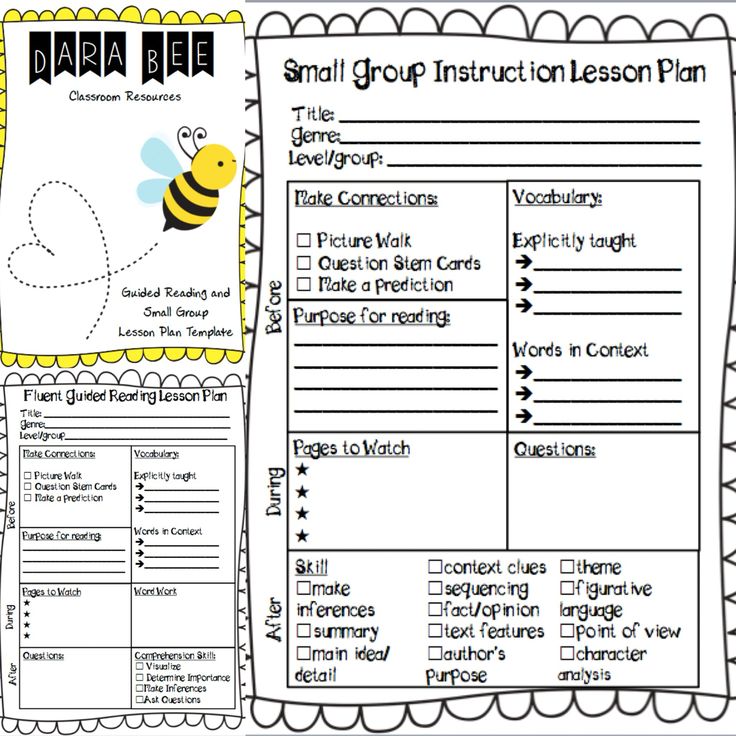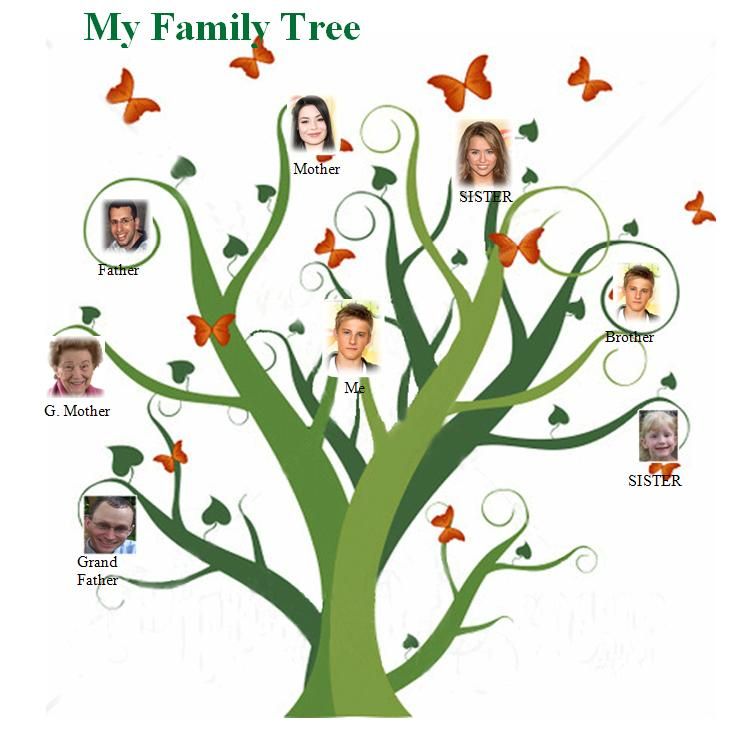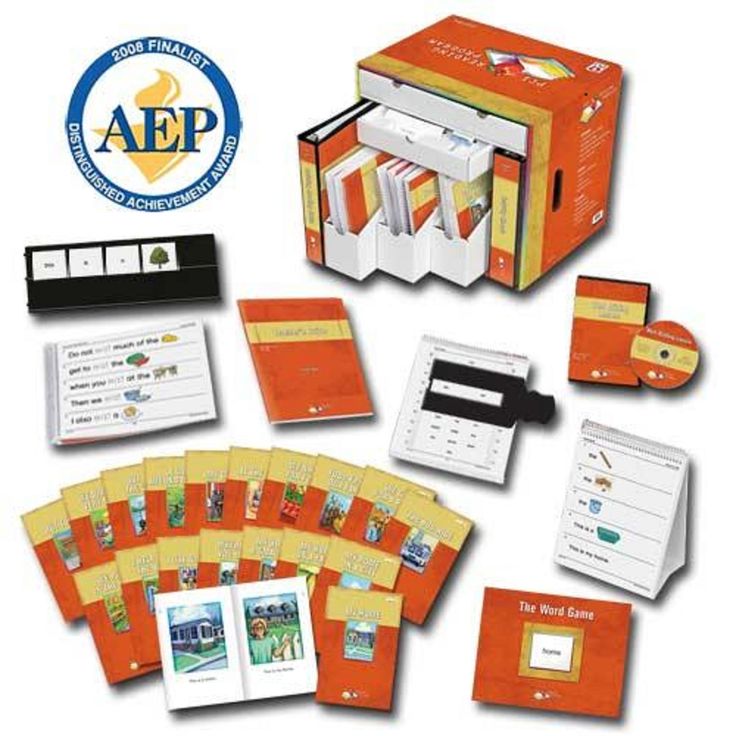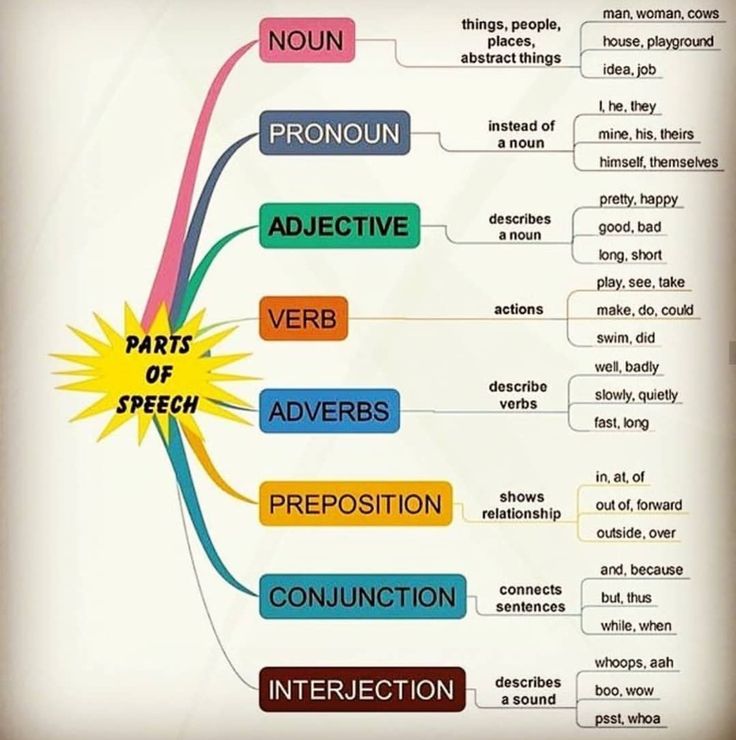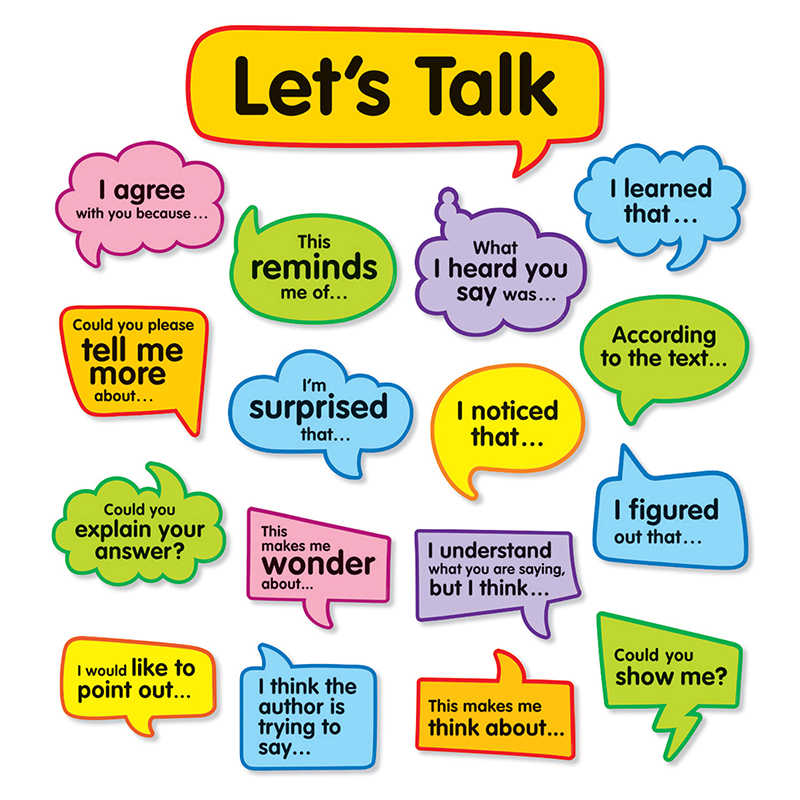Sounding out letters for kindergarten
5 Fun And Easy Tips
Letter sounds are one of the very first things your child will encounter when they begin to explore reading.
By recognizing the phonetic sounds that alphabetic letters make, your child will take their first big step toward associating words with their individual sounds, an essential tool for, when the time is right, sounding out words.
Most new readers start from the same place — by learning their letters! And no matter where your child is on their reading journey, working with them on their letter sounds is a great way to help strengthen their fundamental skills.
Here are five fun and effective tips for working on letter sounds with your child.
5 Fun And Easy Ways To Teach Letter Sounds
1) Touch And Feel Letters
Humans are tactile creatures, and we depend on touch to tell us a lot about the world around us. This is especially true of kids when they’re learning!
Although most traditional reading curriculums focus on auditory and visual cues for letters and their sounds, touch can be helpful, too. We have five senses, after all, so we might as well take advantage of them!
As opposed to relying solely on how a letter looks when it’s written (and flat), adding in a physical sensory element can help your child build a stronger connection to the letter sound they’re trying to learn.
Doing this engages an extra part of their brain while they learn. Not only will they know what the letter looks and sounds like but also what it “feels” like. Associating the “feel” of a letter with its pronunciation may help them gain a better understanding of letter sounds more quickly.
There are plenty of options for exploring reading through your child’s sense of touch. The best part? Your child will get to do one of their favorite things — make a mess! Letting them get messy with letters provides a great incentive to learn.
If you’d like to try this tactile learning style, you can get started by grabbing a few blank pieces of paper. Using a thick, dark marker, write out the letters you want your child to work on.
Then, you can simply grab whatever you have around the house that is malleable enough to form into letters. PlayDoh or kinetic sand are both great options.
We recommend saying the associated letter sound as your child looks at and forms the written letter with the PlayDoh or kinetic sand. You can also encourage them to shape their material over the outlined letter on the page if they need some extra guidance.
Feel free to also brainstorm words with them that share the letter sound they’re practicing. This could help them make even more connections to the letter and its sound!
If you don’t mind a little extra clean up, shaving cream can also be a great option! Simply spread out the shaving cream on a flat surface. Trace out the letter for them in the shaving cream, then ask them to do the same while you repeat the letter sound.
2) Connect Letter Sounds To Familiar Symbols
Letters and their sounds might be unfamiliar to your child. By making a connection between letter sounds and items or symbols your child might already be familiar with, you can help bridge the gap between what they don’t know yet and what they do!
Utilizing things that your child already knows and loves may encourage them to get more engaged with learning their letter sounds.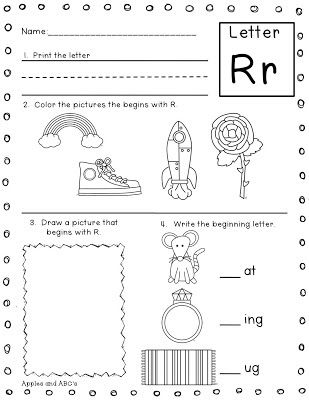 Familiar ideas will also make them feel more confident and comfortable while learning.
Familiar ideas will also make them feel more confident and comfortable while learning.
For example, if you want to start with the letter “T,” consider printing out pictures of things that start with “T” that your child loves, such as trucks and tigers. Let your child choose which pictures to use, and then help them create their very own alphabet book with those images!
Working with your child to construct their personal letter-sound alphabet — a mixture of the specific picture you want them to learn to associate with a particular letter sound — is an easy and fun craft project that will pay off in the long run.
The more personalized you can make the learning process the more fun your young learner will have!
Familiarity can also help your child beyond simply learning the letter sound: it helps them build confidence! The more your child feels like they understand and know what they’re reading, the more likely they’ll be to develop an enthusiasm for learning.
3) Repetition, Repetition, Repetition
This technique focuses on repetition, which is great for getting your child familiar with their letter sounds. By consistently repeating the same letter sounds to them, you can help your child more easily pick up on them.
By consistently repeating the same letter sounds to them, you can help your child more easily pick up on them.
A great idea might be to focus on introducing your child to one letter sound at a time. You could make a “letter of the week” jar for your child. Place an empty jar on your counter labeled with the letter sound for the week.
Every time your child points out a word they’ve heard that starts with the letter sound of the week, they earn a “ticket” or “point” in the letter sound jar (you could also use stickers on a poster if you don’t have a jar handy).
Challenge your child to gain three or four points (or more!) during the day. You’ll want the jar to be somewhere your child sees it often — maybe in the kitchen so you can prompt your learner to think of a word while you’re making dinner or washing dishes!
They don’t have to rely on only the things they hear or see in real life, especially when it comes to those trickier letter sounds (like x, q, or z). Consider using some of your daily reading time to flip through magazines or books and point out the letter sound whenever you come across it.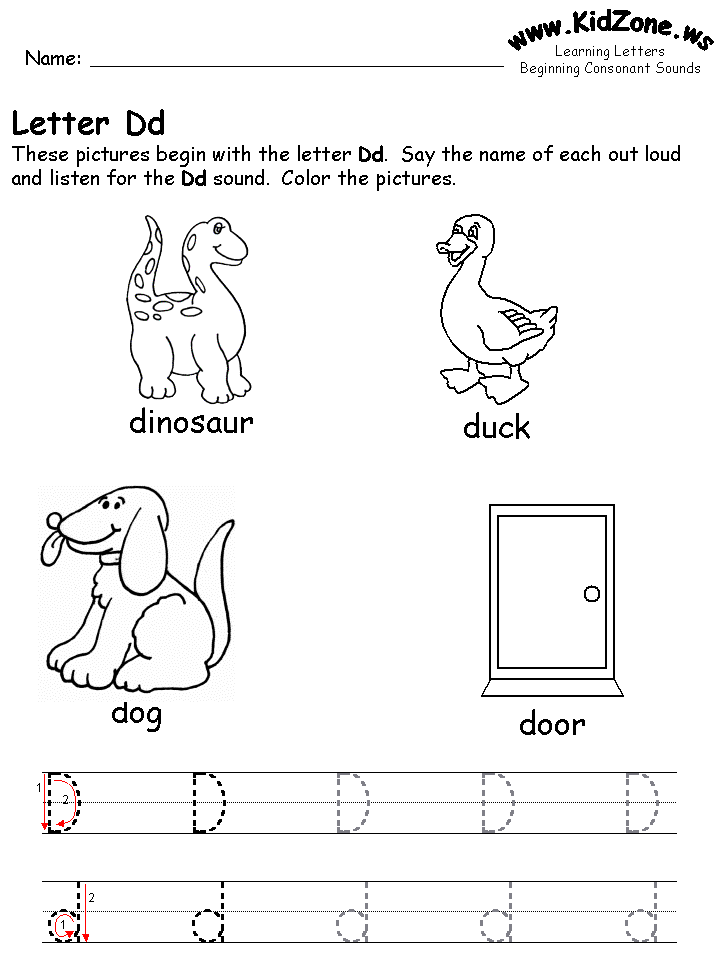
Emphasizing repetition this way really gives your child the chance to focus intensely on a single letter and explore the primary sound it represents!
Giving them ample amounts of time, practice, and exposure to one sound at a time may help them with their learning longevity.
4) Digital Letters In The 21st Century
Technology is a huge new factor in modern-day learning. Not only do children learn how to read and write texts, but now they also have to learn how to use a keyboard at a very young age.
While too much media time can be bad for your child, there are ways to be mindful about media consumption and incorporate media into their letter-sound learning. Especially for busy families, media can be a really useful asset to add to your parenting tool belt.
If you’re looking for a safe, personalized, and reliable place for your child to work on their reading and letter-sound skills, our online learning center has tons of playful games and exercises!
Your child can also use a simple keyboard to engage their letter-sound skills.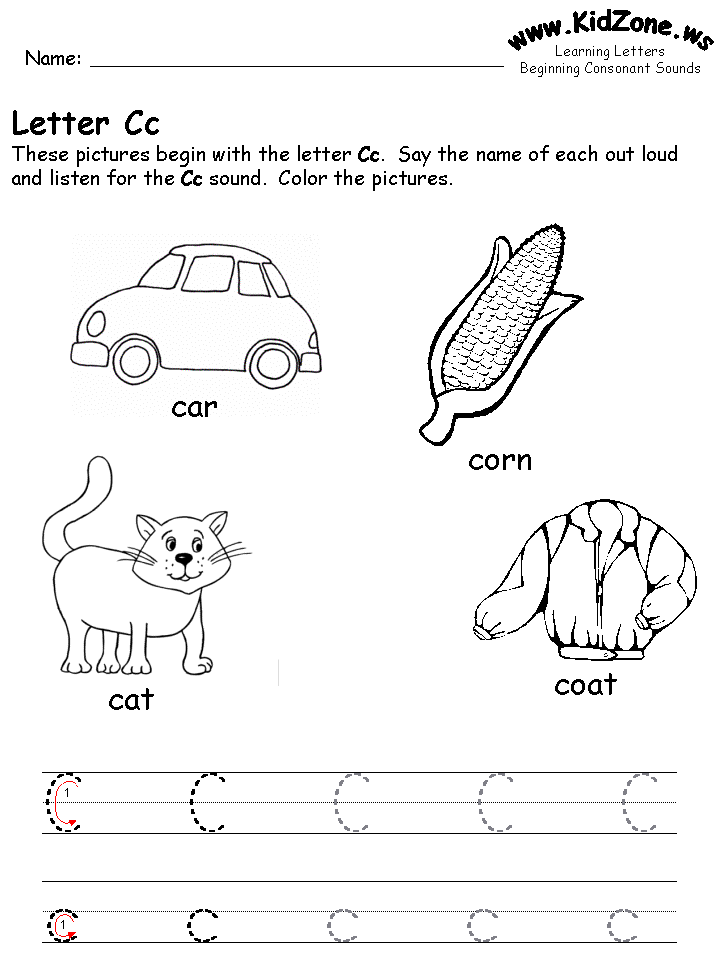 For this activity, you can call out the sound of a letter and ask your child to hit or point to the letter it matches on a keyboard.
For this activity, you can call out the sound of a letter and ask your child to hit or point to the letter it matches on a keyboard.
This exercise is easy and versatile, as you can use any keyboard you have around — on your phone, your computer, or a device designed for kids. And your child will probably love pretending to be a grown-up just like you!
5) Bingo
Classics are classics for a reason. And Bingo is a time-tested, kid-approved game!
If you’d like to take a shot at this activity, draw or print out a Bingo sheet that has pictures of things your child is familiar with (remember tip #2!). We recommend sticking to things they see daily, like apples (for the “a” letter sound), bikes (for the “b” letter sound), and so on.
To play, call out a letter sound and instruct your child to mark off the picture that begins with the same sound. If your child has siblings or neighborhood friends, consider inviting them to play along (it makes for a great virtual game, too).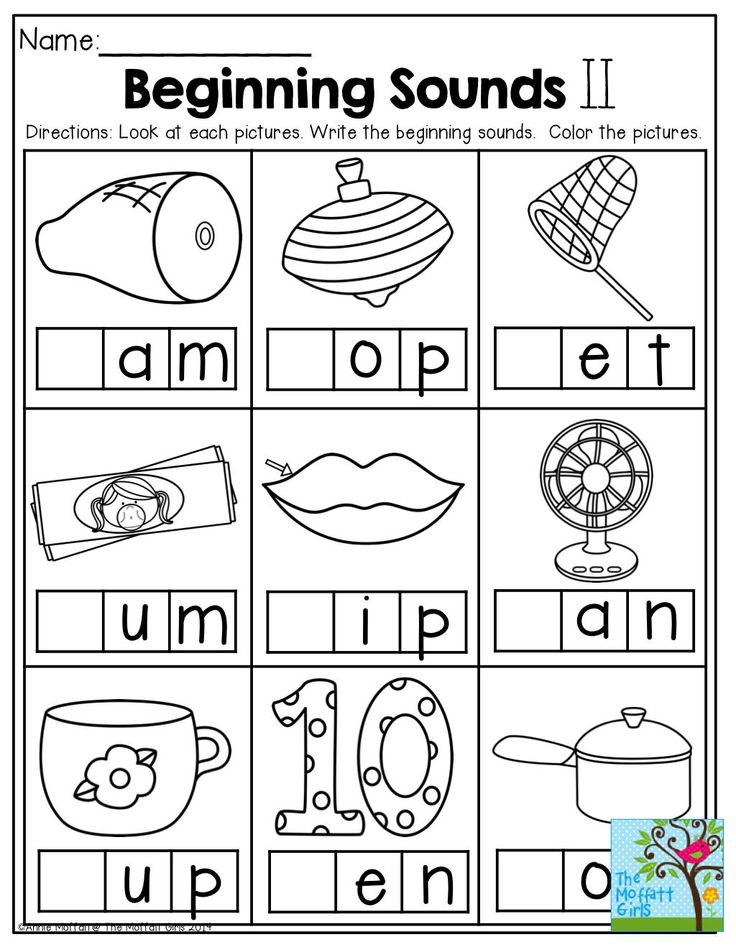
The first to make it to bingo wins!
Making Letter Sounds Fun And Functional
We hope these tips were helpful and gave you some creative ideas for how to get your child engaged with letter sounds (while having a blast along the way!).
We always want to leave you with a reminder that on the journey toward helping your child become a confident, enthusiastic reader, it may take some time to discover what learning strategies are the perfect fit for them. That’s OK!
If you ever need a little extra help or want to switch up your child’s learning routine, our learning center is always open and full of engaging and effective exercises for your emerging reader!
Author
Videos for Learning Letter Sounds
Last updated on January 5, 2022
Don’t waste time searching for videos on YouTube! I’ve compiled a list of my five favorite tried-and-true videos for teaching and learning letter sounds.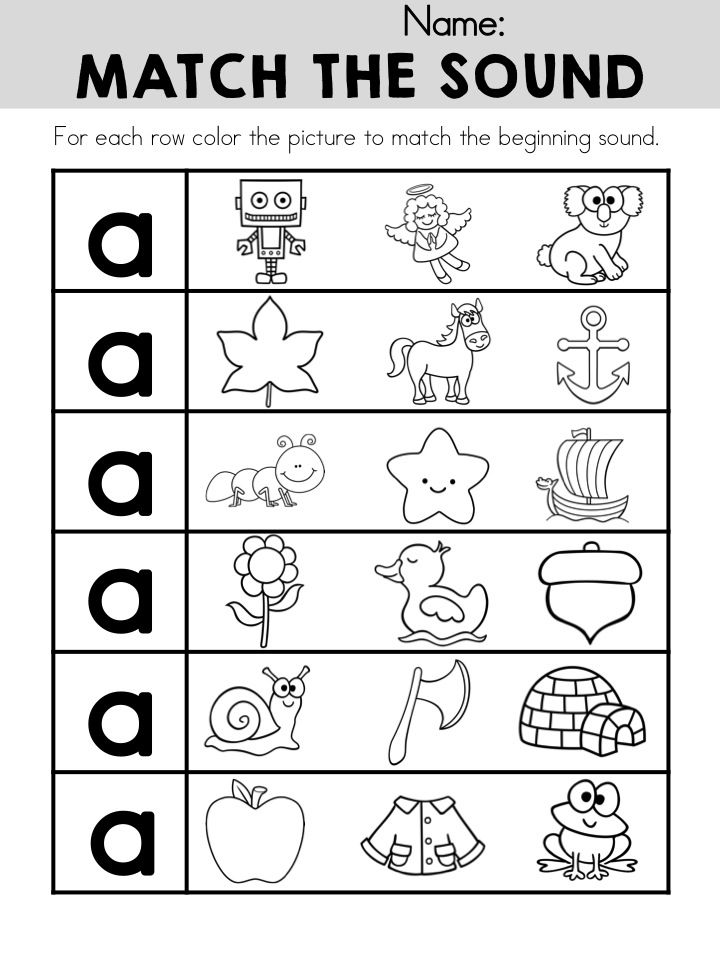
It’s the 21st century, and we know that videos are highly engaging for kids and adults alike. So why not use videos for teaching and learning?
I love using videos with my kindergarten students, especially my English language learners (ESL/ELL students). There’s just something about songs that helps learning “stick.”
You can use educational videos to open a lesson, as a warm up, to fill in the small time gaps during the day, or as a review at the end of the day.
I’ve scoured YouTube for videos for learning letter sounds. Here are the top five videos that I recommend!
Learning Videos for the Classroom
While I personally believe these videos are appropriate for preschool, kindergarten and first grade classrooms, remember that there can often be inappropriate ads before and after YouTube videos. Also, I always recommend previewing the full video before showing it to your class.
If you plan to show YouTube videos in your classroom, I highly recommend that you read this blog post by Catherine, the Brown Bag Teacher.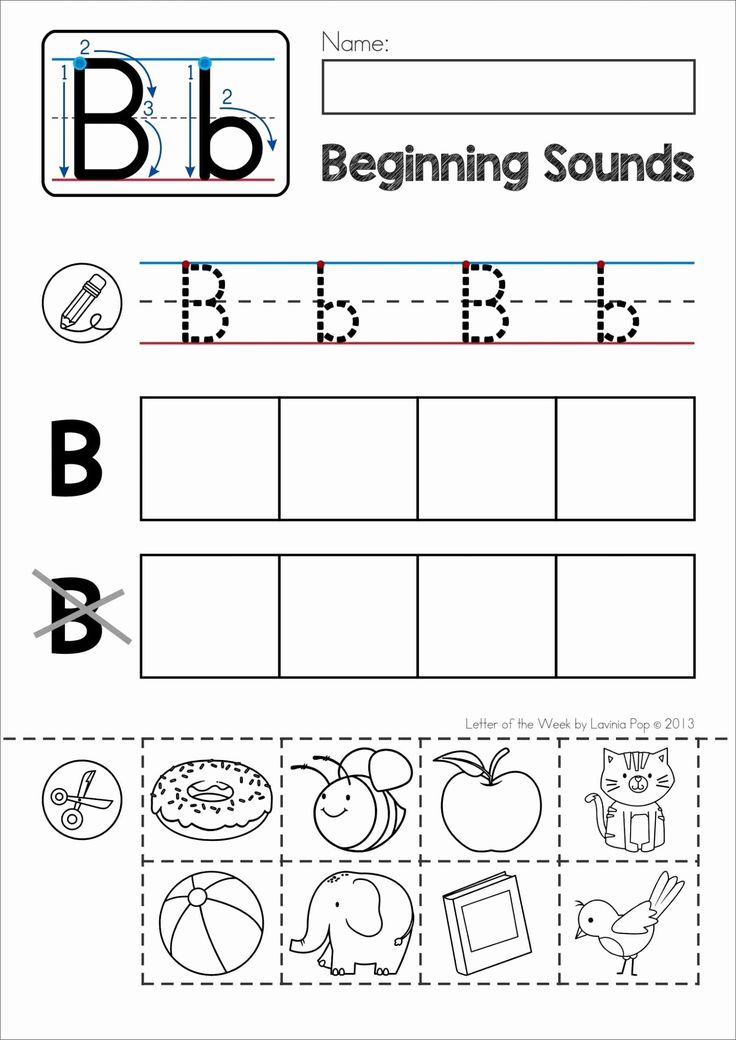 She shares three ways to eliminate YouTube video ads so that you can safely play these learning videos in your classroom.
She shares three ways to eliminate YouTube video ads so that you can safely play these learning videos in your classroom.
Without further ado, here are five fabulous videos for teaching and learning letter sounds in the classroom!
Videos for Learning Letter Sounds
1. Have Fun Teaching’s Alphabet Song
This video is perfect for practicing letter names and sounds. It says the names of the letters clearly as they appear, which provides great visual repetition. It also a catchy song and is well-loved by students.
2. The Letter Factory Letter Sounds
This video is a kindergarten teacher favorite! It has all of the clips and songs from the Letter Factory video. Each sound is sung many times. The letters are shown so students can connect the sounds to the letters. There are also many word/sound connections. For example, “l” is sung by licking lollipops.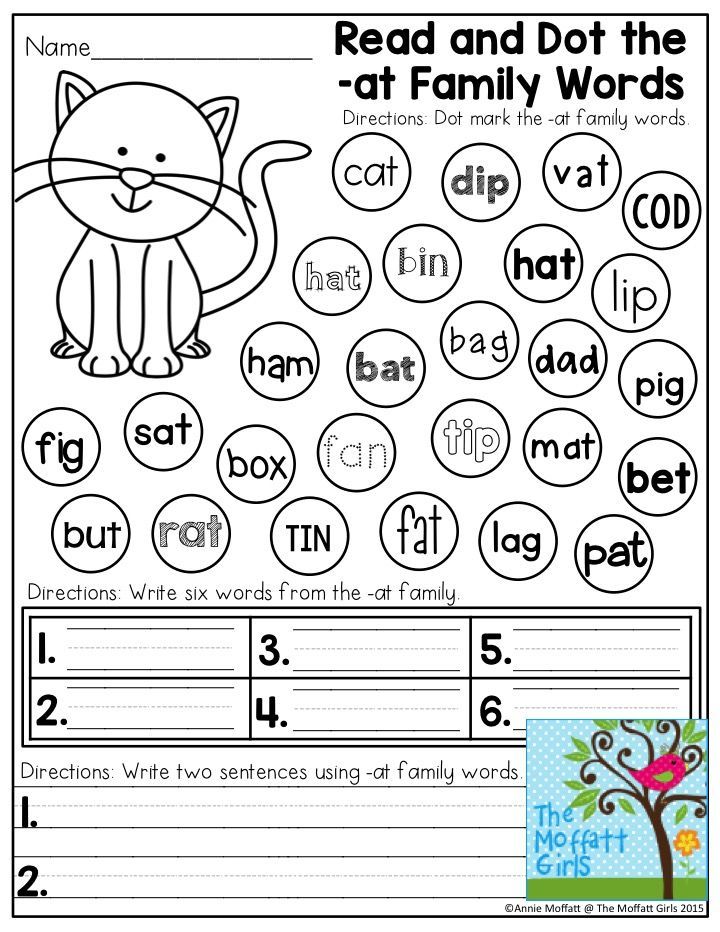
[Note: Every time I start open the link to this video, it begins the video at 50 seconds in, which is the letter E. To start at the letter A, just click on the beginning of the video so it starts at 0:01.]
If you like this video, you can purchase the whole thing as a DVD or even stream it from Amazon! [affiliate]
3. Learning Letter Sounds
Have you heard of Jack Hartmann? He has some amazing educational videos on YouTube. In this video, Jack is “on the beach.” He reviews all the letter names and sounds in order. He also acts out each beginning sound as the word/object is displayed on the screen. I love that he focuses on building brain and body connections!
4. Act Out the Alphabet
This is great for English language learners! In this video, Jack acts out the alphabet (in order).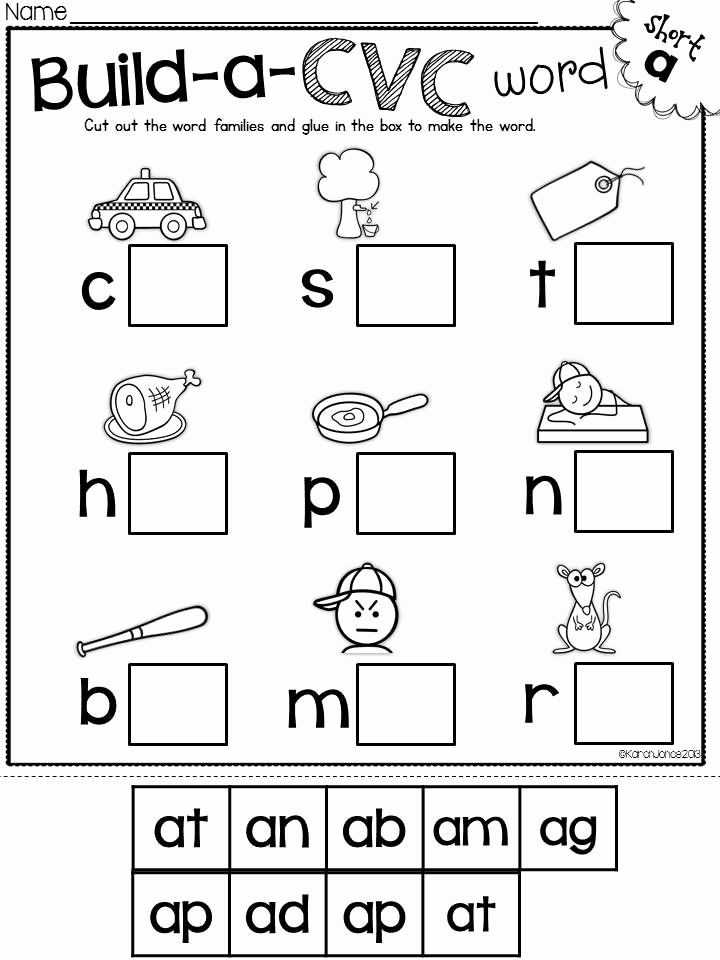 It’s kinesthetic, so there’s a movement for every letter sound. For each letter, he says the letter name, letter sound, a word that starts with the letter and acts it out in a way for students to mimic.
It’s kinesthetic, so there’s a movement for every letter sound. For each letter, he says the letter name, letter sound, a word that starts with the letter and acts it out in a way for students to mimic.
5. Letter Sound Automaticity
This video is more “advanced” because it practices the letter sounds out-of-order (just like Move & Master Fluency Tables – Alphabet Edition)! It mixes lowercase and uppercase letters and it includes long vowel sounds, too! As it shows each letter, it gives 4 seconds of wait time for students to say the letter sound before Jack reinforces it by saying it in the video. Each letter sound is reviewed twice.
Do you know of any videos for teaching letter sounds?
What do you think? Do you have any videos you could add to the list? If so, please let me know in the comments below! I would love to update this post with more videos.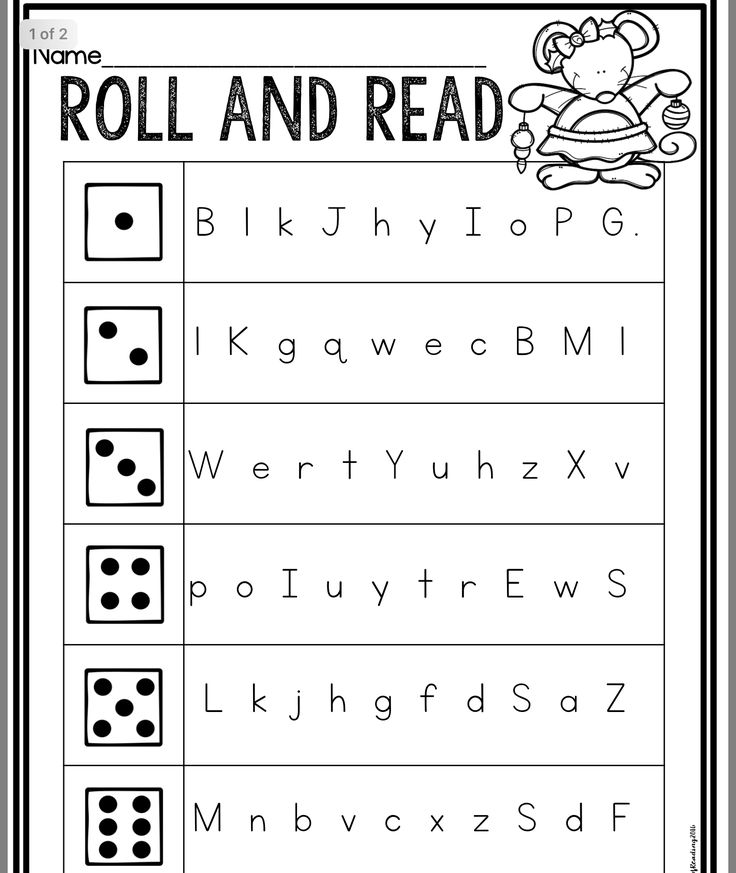 🥳
🥳
FREE Phonics Resource
If you’re teaching letter sounds, you’ll probably be interested in this FREE “Help Your Child Learn to Read” brochure for your students’ parents!
About the Author
Lauren
I help elementary teachers streamline their phonics and reading instruction by giving them all of the information and resources they need to maximize every reading lesson and raise their students reading levels once and for all.
You May Also Enjoy These
Reader Interactions
article "The best way to learn letters" | Article (senior group) on the topic:
The best way to learn letters
The purpose of this heading is to draw your attention to the really most effective way to teach a child the letters of the Russian alphabet in the shortest possible time and teach him to pronounce these letters with sounds. You will see for yourself the simplicity and effectiveness of this method by reading this article and starting to teach your child letters with its help. After five lessons, your child will know all 10 vowels well and begin to memorize consonants, even if before that he did not know a single letter. And, most importantly, he will learn letters in the process of games and will remember them firmly. nine0004
After five lessons, your child will know all 10 vowels well and begin to memorize consonants, even if before that he did not know a single letter. And, most importantly, he will learn letters in the process of games and will remember them firmly. nine0004
But first, a small digression. Before you start teaching your child letters, you must decide what he needs it for. Some parents are proud that they managed to teach letters to a two-year-old or even a one-and-a-half-year-old child. But this is worth doing only if at the same time you begin to teach your child to read. Any knowledge should immediately find its practical application. And teaching letters in itself, without simultaneous learning to read, does not make sense. There are many other, equally effective, ways to develop a child's memory and stimulate the brain during the formation period. It’s good if, by the beginning of learning to read, the child forgets these prematurely learned letters and does not pronounce them the way he was once taught: Bae, Ve, Ge .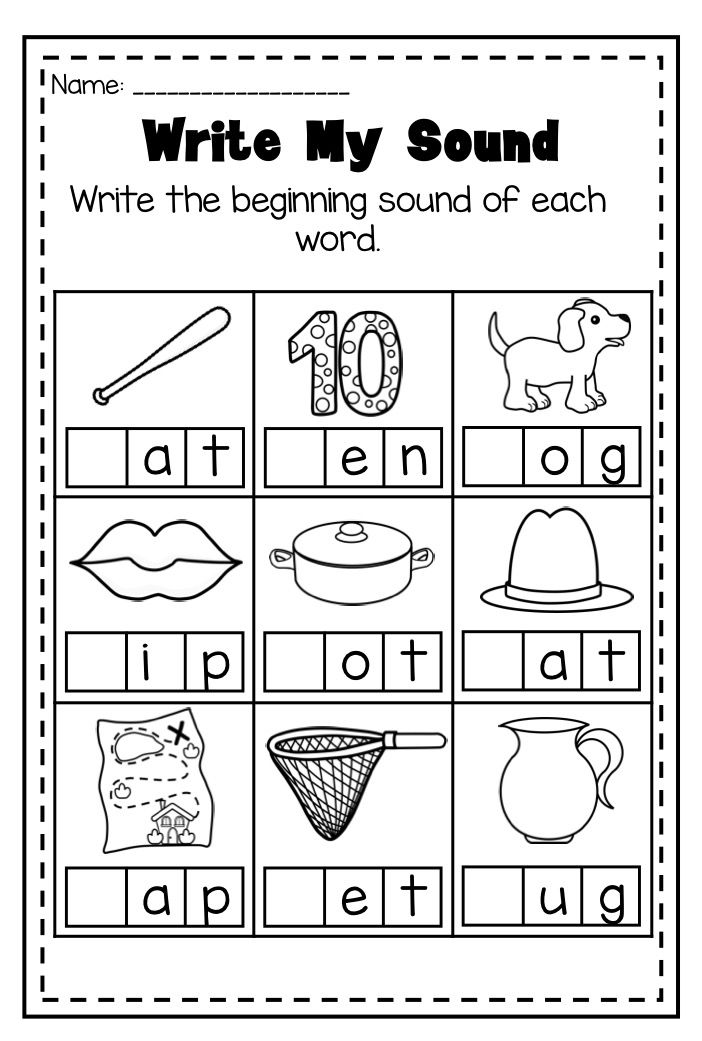 .. or By, You, Gee ... otherwise, when reading, it will greatly interfere with him . You ask: “Well, if you teach a child letters and reading at the same time, then at what age is it better to start, is it already possible from two years old?” I believe that at home, in the family, a mother with a child of this age can already do; but first for half a minute, and then for several minutes during the day. As a result of such “lessons”, built in the form of a game, the child will develop the ability to concentrate on a particular activity, and then, starting from the age of three and even a little earlier, he can be taught to read in a group of children like him. Just do not forget that learning to read, and especially early, should take place without coercion, in the game, against the backdrop of positive emotions. nine0004
.. or By, You, Gee ... otherwise, when reading, it will greatly interfere with him . You ask: “Well, if you teach a child letters and reading at the same time, then at what age is it better to start, is it already possible from two years old?” I believe that at home, in the family, a mother with a child of this age can already do; but first for half a minute, and then for several minutes during the day. As a result of such “lessons”, built in the form of a game, the child will develop the ability to concentrate on a particular activity, and then, starting from the age of three and even a little earlier, he can be taught to read in a group of children like him. Just do not forget that learning to read, and especially early, should take place without coercion, in the game, against the backdrop of positive emotions. nine0004
Game method of learning ten vowels in 5 lessons
So, you set out to teach your child to read books. You will start, of course, by learning letters with it. In what order should they be taught? Of course, not in alphabetical order and not in complete disorder, when the child is given mixed vowels, then consonants. An important factor at the initial stage of learning to read in warehouses is the child's solid knowledge of the ten letters denoting vowels (hereinafter, for simplicity, I will simply call them "vowels"). I have repeatedly drawn my attention to the fact that poorly reading children, even schoolchildren, hesitate to name vowels, and when reading they stumble, remembering whether it is E, or E, or Yu. In view of the paramount importance of knowing ten vowels for full reading (so that the child does not “stumble” in each warehouse) I developed this game technique for quickly learning them, which I have been successfully using for several years now. nine0004
In what order should they be taught? Of course, not in alphabetical order and not in complete disorder, when the child is given mixed vowels, then consonants. An important factor at the initial stage of learning to read in warehouses is the child's solid knowledge of the ten letters denoting vowels (hereinafter, for simplicity, I will simply call them "vowels"). I have repeatedly drawn my attention to the fact that poorly reading children, even schoolchildren, hesitate to name vowels, and when reading they stumble, remembering whether it is E, or E, or Yu. In view of the paramount importance of knowing ten vowels for full reading (so that the child does not “stumble” in each warehouse) I developed this game technique for quickly learning them, which I have been successfully using for several years now. nine0004
The duration of each of the five lessons of this technique is a few minutes. Lessons are held twice a week, and on the other days of the week, parents repeat the contents of the previous lesson with their child for two to seven minutes a day. I calculated that the entire teaching of a child to ten vowels using this technique takes a total of just over an hour.
I calculated that the entire teaching of a child to ten vowels using this technique takes a total of just over an hour.
The method is based on the principle of multiple display and synchronous voicing of a group of characters with their gradual partial replacement, proposed by the outstanding teacher Glen Doman. In this case, the task is facilitated by the fact that in Russian the vowels form pairs that seem to rhyme: A - I, O - E, U - Yu, Y - I, E - E.
I supplemented the multiple display with five reinforcing games that I developed.
- The purpose of this method is to give the child a solid knowledge of ten vowels in five lessons. Often, parents believe that their child does not need this: “He has known all the letters since the age of two.” When you start showing him the letters, it turns out that he does not know them well. Confuses E with Yo or Yu, does not know E, Y, sometimes thinks, remembering some letter. Before you start learning to read, the knowledge of all vowels must be brought to automatism.
 nine0023
nine0023 - From other ways of studying letters, which often only slow down their assimilation and make it difficult to use (A - watermelon, I - turkey or O - like a donut, Yu - Yulia's letter, I - looks like a pole with a lantern, etc.), this technique is simple and effective. Lesson 1 Yu, I, E - in bold blue font of a slightly smaller size on cards 9x10 cm. In the first lesson, you will only need cards A, Z, O, Y.
On the back of each card, write this letter by hand for yourself so as not to look at the front side when showing the letters to the child.Classes can be taught by a teacher or one of the child's parents.
Display of the first two pairs of vowels (A-Z, O-Yo).
Place two pairs of cards in a pile as shown in the left illustration, with the reverse side facing you. Move card A closest to you forward (as indicated by the arrow in the right picture) and show it to the child. Say, "This is A." Then move the next card forward and say: “This is me”; then - "This is O"; and then - "This is Yo".
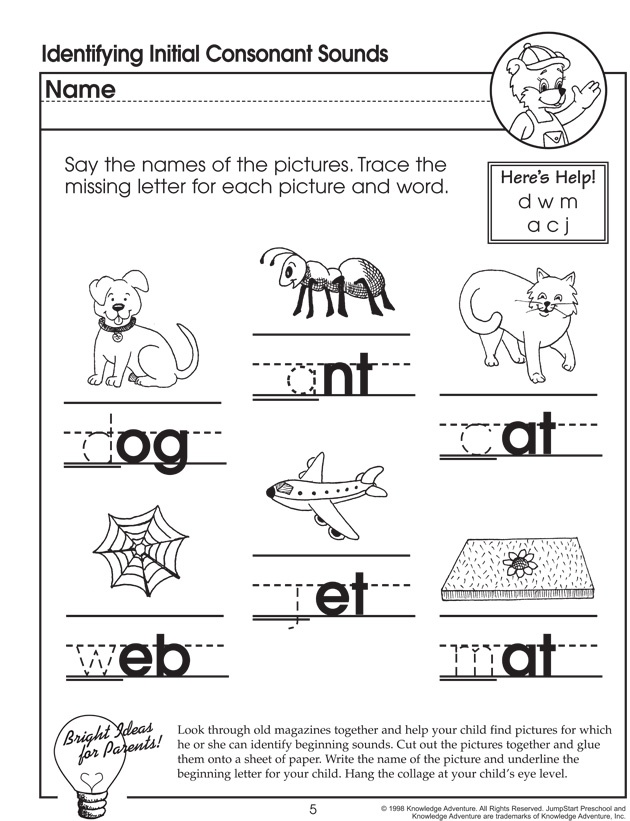 Show each card no longer than 1 second. Make it fun, in the form of a game. Look not at the cards, but into the eyes of the child to see where he is looking and to attract his attention. Most children already know the letters A and O. You can pause and give the child the opportunity to name them. And quickly name the letters I and Yo yourself, before the child, in order not to give him the opportunity to make a mistake. And do not require the child to repeat them. Your task is to quickly show these four letters and at the same time recite a small rhyme:
Show each card no longer than 1 second. Make it fun, in the form of a game. Look not at the cards, but into the eyes of the child to see where he is looking and to attract his attention. Most children already know the letters A and O. You can pause and give the child the opportunity to name them. And quickly name the letters I and Yo yourself, before the child, in order not to give him the opportunity to make a mistake. And do not require the child to repeat them. Your task is to quickly show these four letters and at the same time recite a small rhyme:
"This is A".
"This is me."
"This is O."
"This is Yo".Children easily memorize longer verses, and even more so, they will soon begin to repeat such an easy verse on their own.
If you are a teacher, explain to the child's mother in class that she must show and say these four letters every day until the next class, at least five times a day. Have her do this the first time in your presence so you can correct her if she does something wrong.
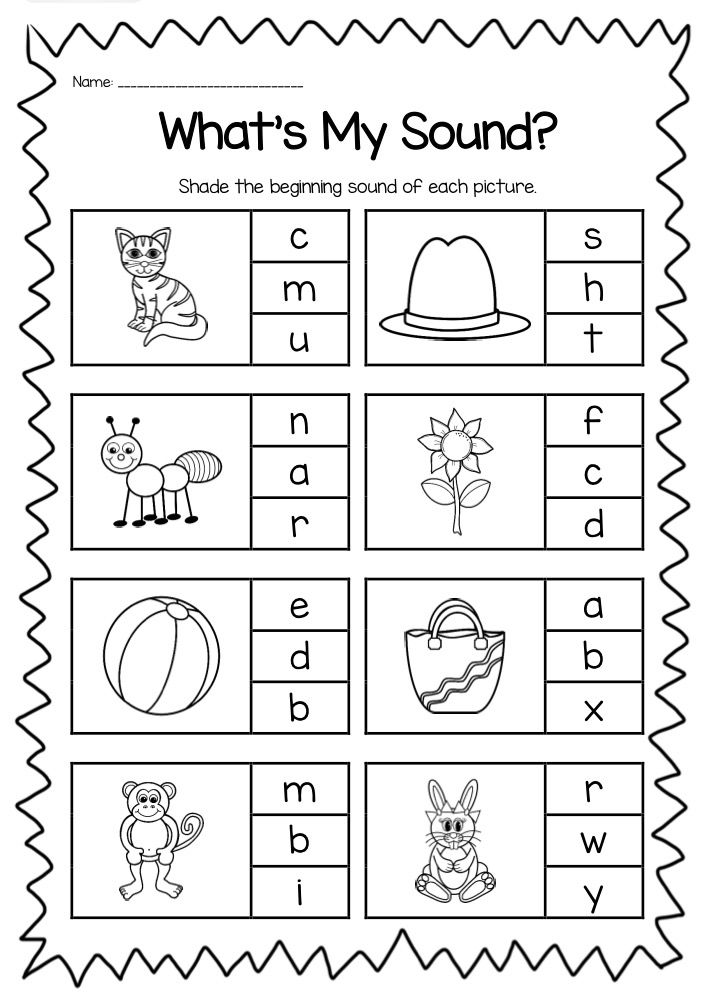 Feel free to explain everything to your parents in as much detail as you would to their children, and check how they understood you. Shuffle the cards. Ask your mom to arrange them in the correct order. Then she should sit or put the child in front of her and, while showing the letters, look into his eyes. She should pronounce letters unfamiliar to the child clearly and before him. A typical mistake is when mom takes out another letter and holds it in her other hand without covering the last letter with it. In this case, the child sees two letters at the same time. nine0004
Feel free to explain everything to your parents in as much detail as you would to their children, and check how they understood you. Shuffle the cards. Ask your mom to arrange them in the correct order. Then she should sit or put the child in front of her and, while showing the letters, look into his eyes. She should pronounce letters unfamiliar to the child clearly and before him. A typical mistake is when mom takes out another letter and holds it in her other hand without covering the last letter with it. In this case, the child sees two letters at the same time. nine0004 Tell your mother that all homework will take her half a minute a day, as one such display lasts five seconds. It's important not to skip them. Gradually, the pause after the word "This is ..." should be increased, and the word itself should be pronounced with an interrogative intonation, as if encouraging the child to name the letters himself. The child must simply name the letter. He should not say "this is A" or "letter A".
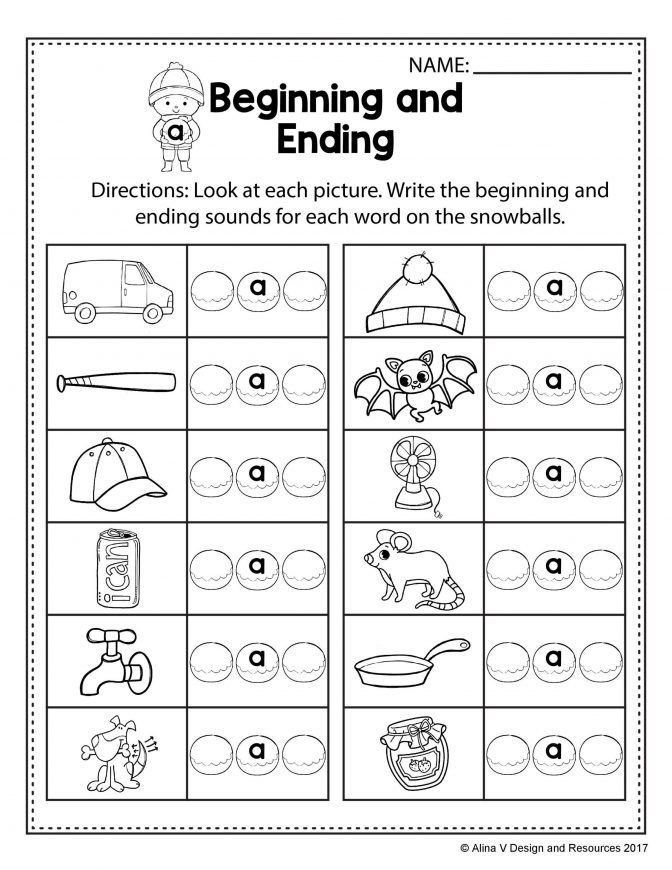 Give your mother the four letters you made, ask them to bring them with you to class.
Give your mother the four letters you made, ask them to bring them with you to class. Lesson #2
By the beginning of this lesson, the children had already repeated A, Z, O, E after their mother for two or three days and remembered them well in this order.
Reinforcing games.
Now with these four letters you need to play five reinforcing games in order for the children to remember them firmly both in the order of the learned rhyme and separately.
Place four cards on the table in front of the child in pairs, calling them out loud, in the order in which they were shown to him. After that, start playing. nine0003
1st game. "Wind".
Explain to the child that the red letters are big brothers and the blue letters are little brothers. Then say: "The wind came up and mixed all the brothers." Shuffle the letters yourself so they don't turn upside down. Then let the child put them in order in pairs, calling out loud: A - next to me, O - next to Y (at first with your help).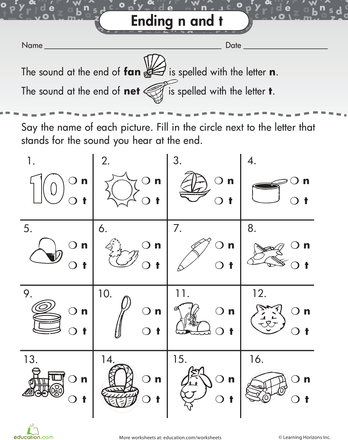
2nd game. "Hide and Seek".
Cover the smaller cards with large ones (red letters on top) and change the order of these pairs: “The little brothers hid under the big ones and changed places so that Lenochka would not find them. Guess which little brother hid under big brother Oh? That's right, Yo hid under O! And under A? That's right, me!" nine00043rd game. "Retreats".
You play the same way, but this time it's the other way around - the big brothers hide under the little ones.4th game. "Crow".
Move your palms over the cards laid out in the correct order and say: "The crow flew, flew, flew, flew and ... ate the letter." Quickly cover one of the letters with your palm: “What letter did the crow eat?” It is better to drive with both palms at the same time, so that it is more difficult for the child to guess which letter you are going to cover. If he couldn't answer quickly, tear your hand away for a moment and cover the letter again. If he doesn’t say even then, tell me, for example: “Next to O.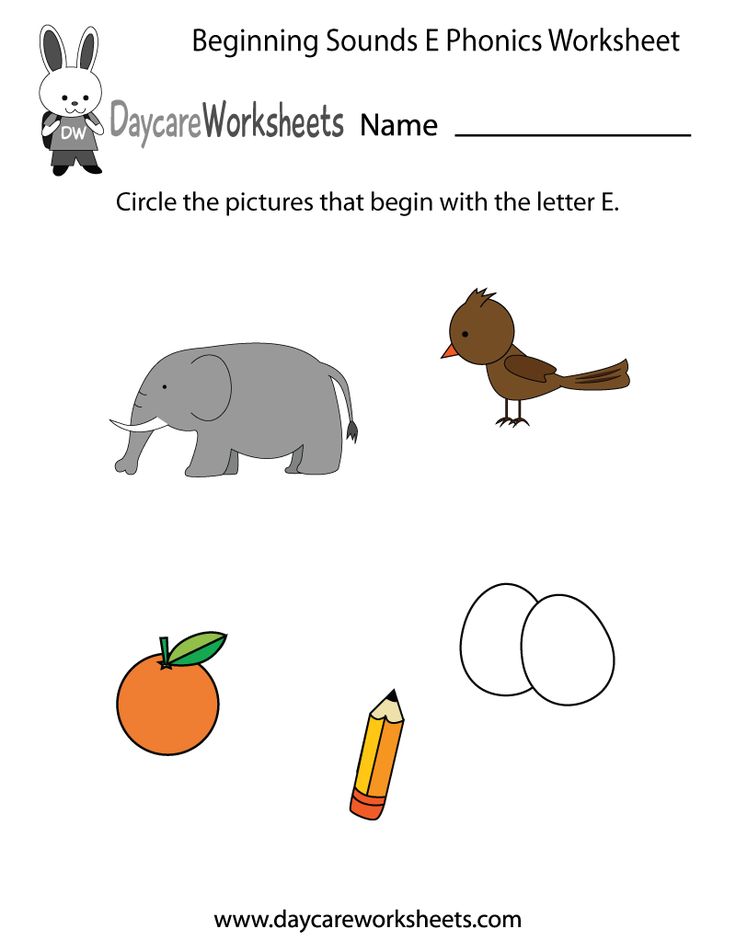 That’s right, Yo!” Over time, the child will remember the location of the letters and will guess them easily. nine0004
That’s right, Yo!” Over time, the child will remember the location of the letters and will guess them easily. nine0004 How to quickly learn the alphabet - learning letters with a child
Letters are all around us. The child sees them in books and magazines, on product packaging, in shop windows. He can't help wondering what it is. Over time, he begins to understand that adults can read, begins to copy his parents, having learned a poem or a fairy tale by heart, and pretending that he is reading a book.
Experts recommend teaching a child to read shortly before school, since at an earlier age his brain is not yet ready to perceive such information. You can learn sounds with it, learn to distinguish them in oral speech, start mastering the alphabet. This pre-letter period is very important, because thanks to it the child will be able to learn to read fluently and understand what he read. nine0004
At what age do you start learning letters?
Many parents believe that a child's development should begin almost from the cradle.
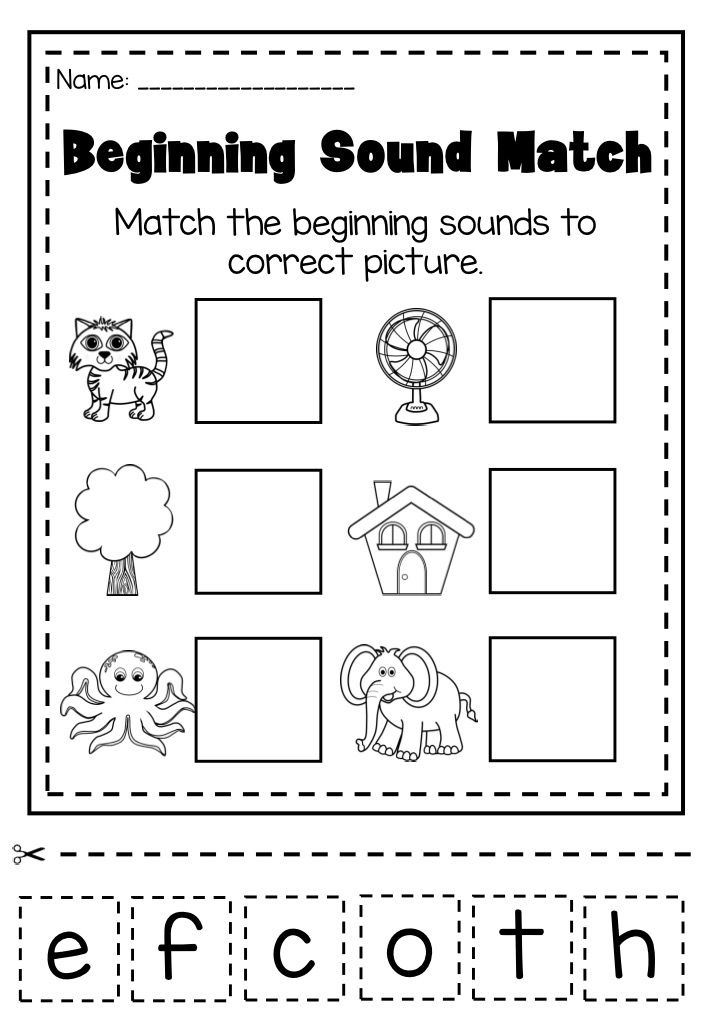 But neuropsychologists warn that learning letters and numbers before the age of 3 is harmful. At this age, the emotional and sensory sphere should be formed. If we force a child to learn, then we violate the laws of brain development, which can have negative consequences.
But neuropsychologists warn that learning letters and numbers before the age of 3 is harmful. At this age, the emotional and sensory sphere should be formed. If we force a child to learn, then we violate the laws of brain development, which can have negative consequences. No specialist will tell you that at the age of 3 or 4 a child should know all the letters. Of course, if you wish, you can force him to learn the alphabet, but this will not be useful, but, on the contrary, can harm. The brain is ready for reading most often by the age of 5-6, and only in 20% of babies - by 4-5. Before this time, it is not worth studying letters. nine0004
But this does not mean that you can forget about the development of the child. At 3-4 years old, you need to work on the development of speech, teach the baby to ask and answer questions correctly, pronounce words, and study the world around him. You need to work on fine motor skills, teach him to dance, form a sense of rhythm, and so on.
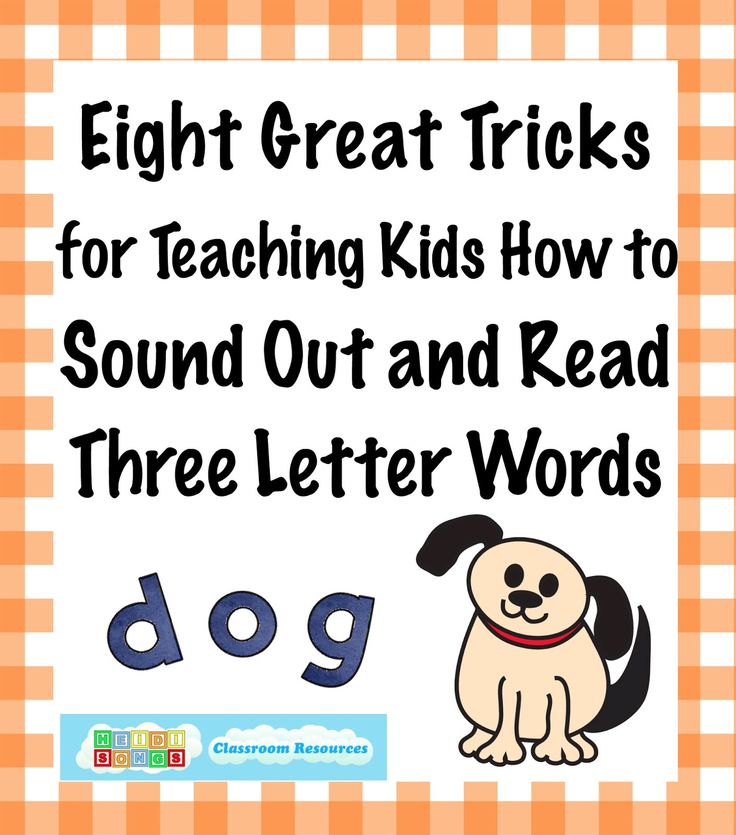
These are the recommendations. However, all children are different. If a child has shown a sudden interest in letters, it means it's time to start learning. And it does not matter if it manifested itself late, for example, at 6 years old. The child should want to read, only after that you can study with him. nine0004
Psychologists point out several signs that indicate a child's readiness for learning:
- The kid perceives well what he read by ear, he can tell what this book is about.
- He knows how to build phrases, pronounce all sounds.
- Interested in what is written in a children's magazine, book or poster.
- Pretends to read, imitating adults.
If all these signs appear, you can start classes. You can’t put pressure on a child, force him to study, bribe him (“learn the letters - I’ll give you a chocolate bar”) - this will not achieve anything. nine0004
In those cases where the interest in letters appeared early, there is no need to give up classes.
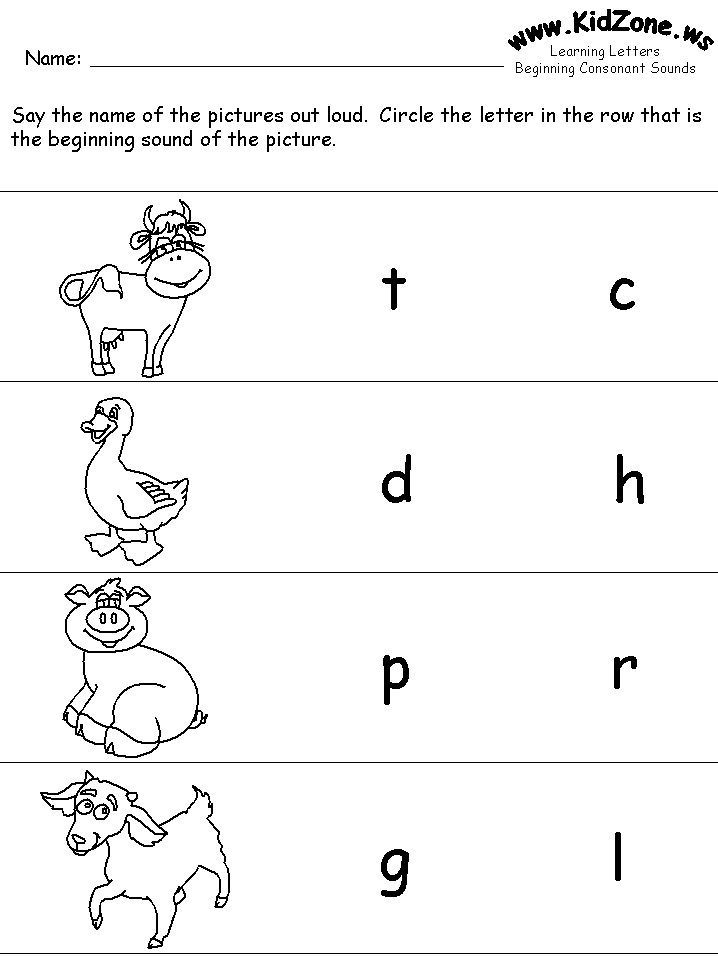 But do not overload the baby, work with him for no longer than 7 minutes, classes do not have to be done every day, you can take breaks of 2-3 days.
But do not overload the baby, work with him for no longer than 7 minutes, classes do not have to be done every day, you can take breaks of 2-3 days. How to start learning the alphabet?
The child began to show interest in letters. No need to immediately load it with knowledge, cramming the alphabet. Move a little. The easiest way for children to remember the first letter of their name. Explain to him what this letter is, what it is called. You can ask him to find this letter in the text. Gradually, he will learn to highlight it, will pay attention to it. The first step has been taken. nine0004
Parents now trust their children's education to various children's tablets, phones and other similar toys. Remember that they are teaching letters, not sounds. Toddlers need to be taught precisely sounds, so it will be easier for them to master reading.
A letter is a graphic representation of sound, each has its own name. But learning to read, knowing only the names of the letters, is very difficult.
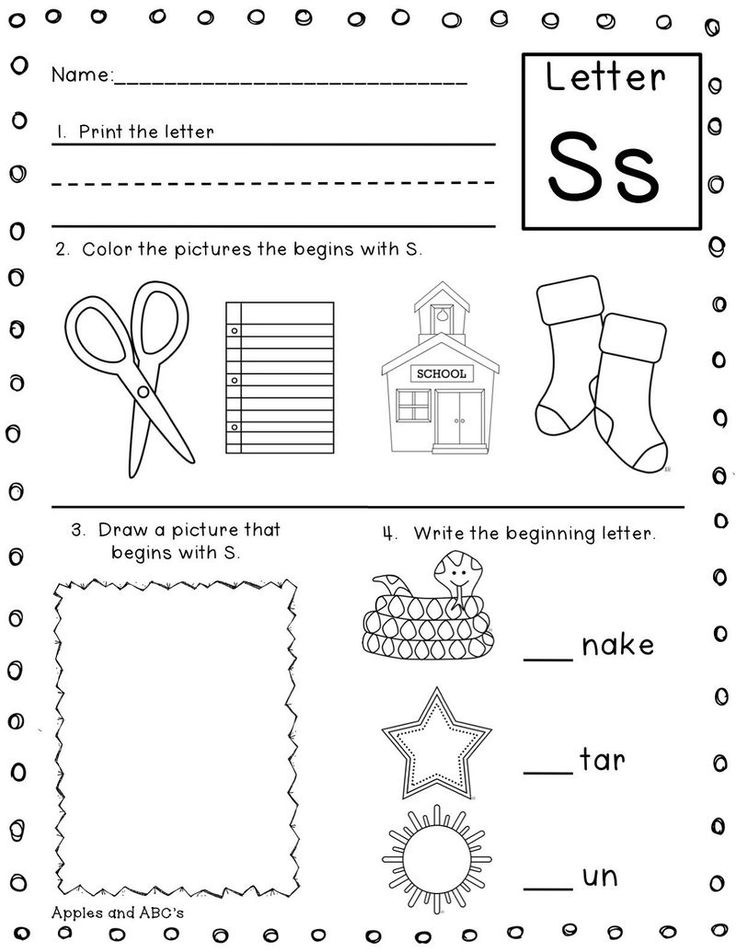 Imagine that the child will need to read the word "ball". How will he do it? Just as he was taught: "beael". And all because he pronounces letters, not sounds. nine0004
Imagine that the child will need to read the word "ball". How will he do it? Just as he was taught: "beael". And all because he pronounces letters, not sounds. nine0004 It is better to start learning with sounds, pronouncing them with the child. Parents themselves should not confuse sound and letter. Sound is what we hear. A bumblebee buzzes - this is a sound, a hammer knocks - this is also a sound. But far from all sounds we can get words. If we clap our hands, the sound will appear, but the word will not.
You can create a word from special sounds called speech sounds. Make sure that the child does not confuse the letter and sound. Explain to him that a letter is an icon that can be seen in a book or drawn on paper. Letters can be seen with the eyes and sounds can be heard. nine0004
General recommendations for teaching a child
If you decide to work with a child, remember the basic rule - he should be interested. You can't force him. At this age, the easiest and most accessible way of learning is through the game.
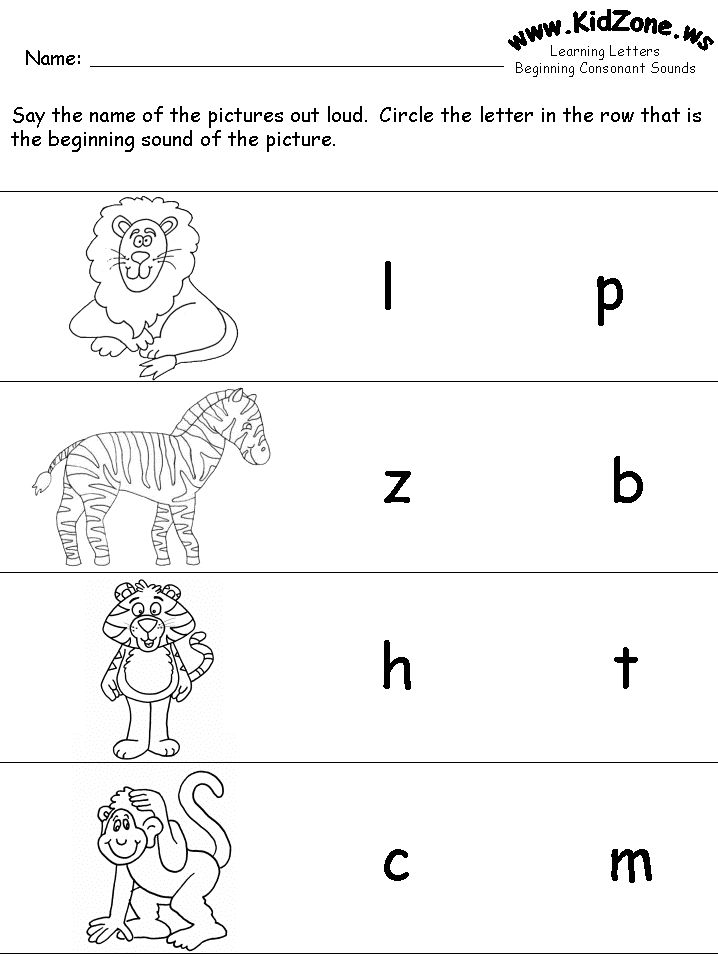
It is difficult for kids to concentrate, to sit in one place for a long time, so classes should be short, 5-10 minutes each. As soon as you notice that he has become bored, switch to something else. If he forgot everything that you went through, do not get annoyed, repeat again until he remembers. If you overload your child with information, he will develop an aversion to learning. nine0004
At an early age, a child develops visual-figurative thinking, and only then - abstract-logical. This means that it is useless to draw letters on paper or a board. So you can't learn them. For him, it will be just a set of dashes.
The child needs a visual association. For example, if you are learning the sound "a", you can show him a picture of a watermelon or any other item that starts with that letter. Stock up in advance with soft cubes with letters, bright cards, coloring books, beautiful colored primers. nine0004
Do not learn letters in alphabetical order. It is better to start learning with vowel sounds.
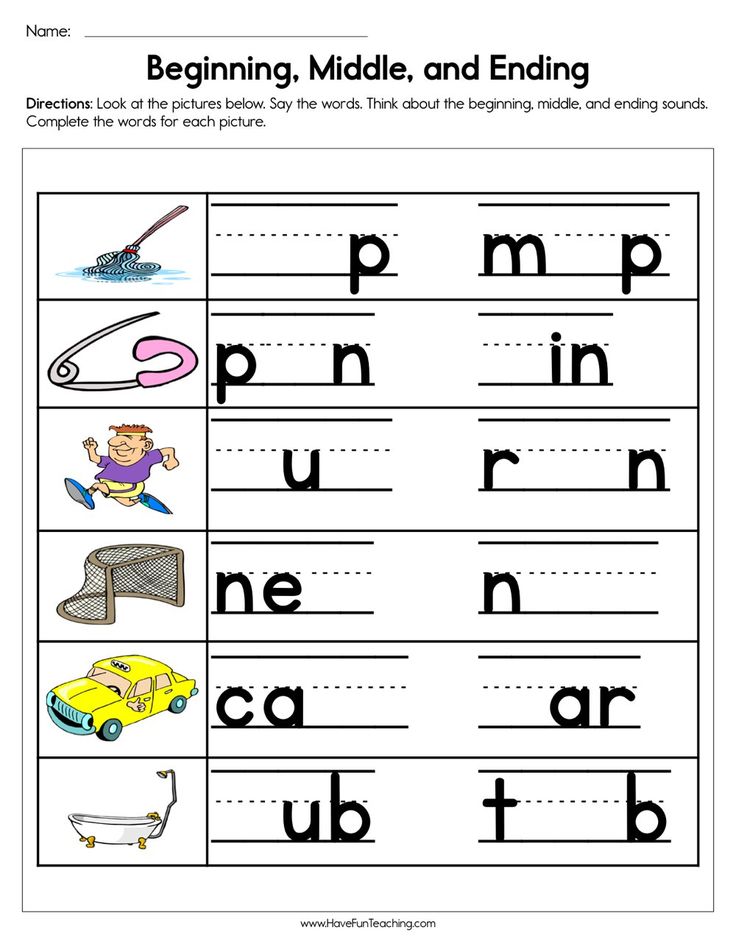 The letters that are most often found in speech are studied first, then you can move on to rarer ones.
The letters that are most often found in speech are studied first, then you can move on to rarer ones. How to learn vowels?
First, explain to your child that all words are made of sounds, just as houses are made of bricks. The more sounds in a word, the longer it is. After that, you can proceed to the study of sounds.
Start with "a" . You can show the baby pictures that show objects whose names begin with this letter. Draw with him the mouth that makes this sound, note how we open it wide. Let him try to name the words that begin with this letter. Do not overload the child: 1 lesson - 1 letter. nine0004
Try to consolidate the acquired knowledge. So you go to the kindergarten, you saw a pharmacy, let the kid try to find the letter that you studied. Bought a children's magazine, see if the title has the letter "a" . You can mold a letter from plasticine or dough, cut it out of paper. You can lay it out of sticks or sand.
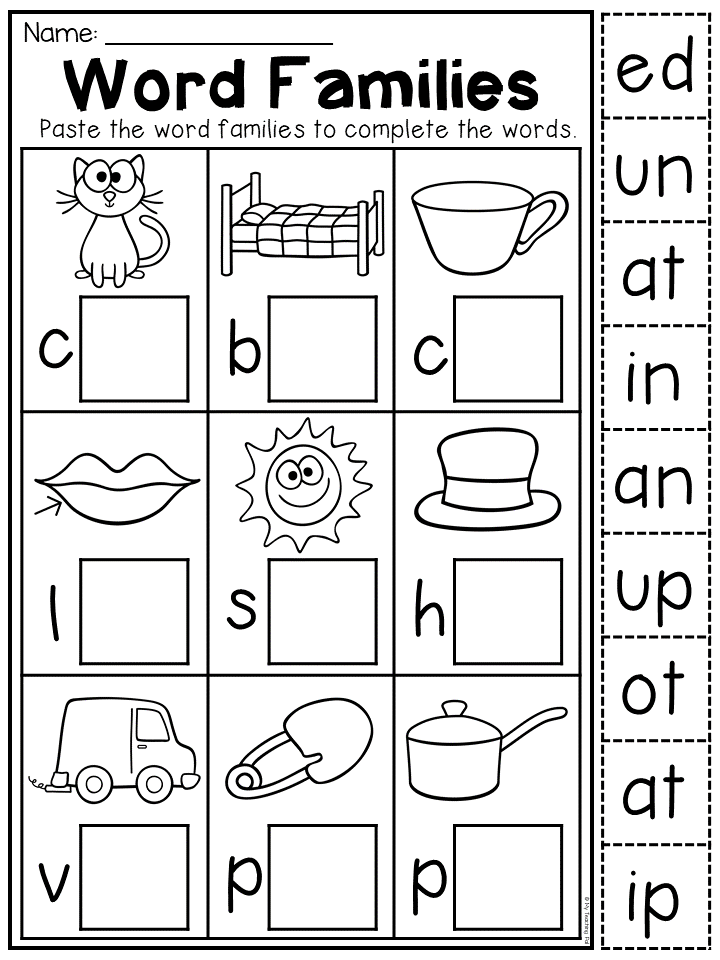
It will be much easier for you to captivate your baby if you always have blocks with letters, bright books, cards at hand. You can sing a song about a letter or listen to a cheerful verse. nine0004
So, study all the vowels one by one. At the end, you can explain that the sounds that you have already learned are called vowels. These are sounds that can be sung. Try to sing together "ah-ah-ah" or "woo-woo" .
Remember that we have 6 vowels ( a , o , y , e , s , and ) and 10 vowels. The letters i , e , i , i consist of 2 sounds. It is better to postpone the study of the latter for later, because there is no sound "i" , i is a letter consisting of 2 sounds. Do not confuse the child so that later educators and teachers do not have to retrain him.
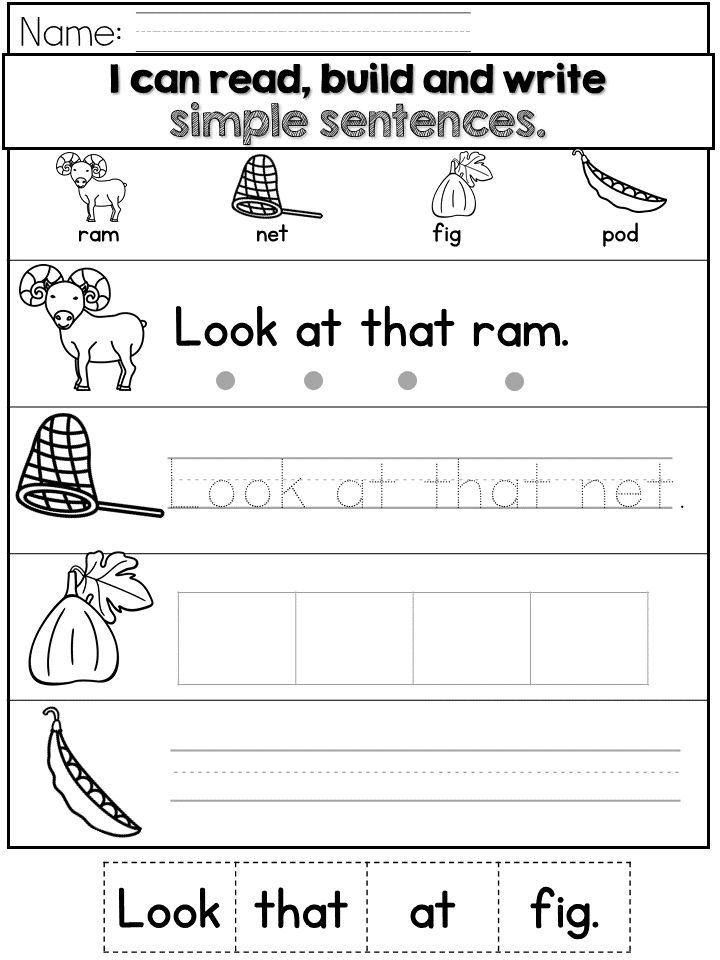
How to learn consonants?
After you have learned the basic vowels ( a , y , and , o ) you can move on to the consonants. You need to start with the simplest consonants ( b , p , m , n , t , g ). And here again we remember that we are teaching the child sounds, not letters. We know what to say0143 em ”, “ en ”, “ be ”, but children do not need to know this yet. The child must learn that this is the sound " mm " or the sound " nn ". After the baby learns simple consonants, you can proceed to the study of hissing.
Just like with vowels, knowledge needs to be consolidated. Children may confuse letters. To prevent this from happening, play associations. You can ask the children to think of what this letter looks like.
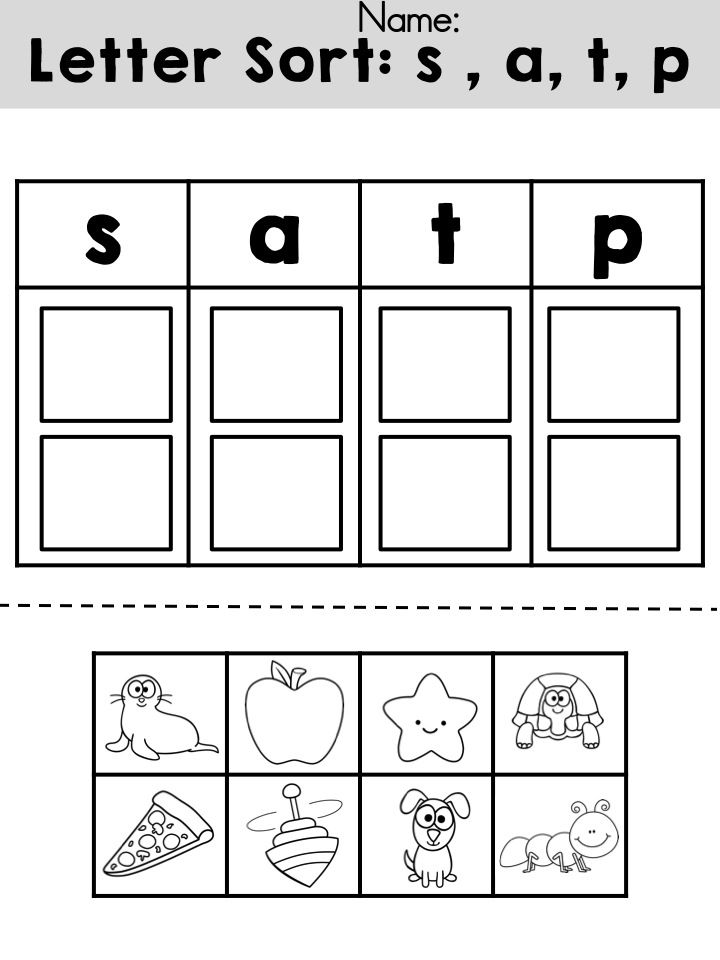 Look for objects on the street that resemble this letter. For example, you walked past the horizontal bar, it is shaped like the letter " p ", or look at the doorway, also resembles " p " in shape. Fold it out of pencils, look for it in store signs.
Look for objects on the street that resemble this letter. For example, you walked past the horizontal bar, it is shaped like the letter " p ", or look at the doorway, also resembles " p " in shape. Fold it out of pencils, look for it in store signs. Alphabet Learning Methods
There are several popular methods for teaching children to read and memorize the letters of the alphabet. You can use them, especially since specialists worked on them. But, no matter what method you work with, it is important to remember that your classes should not resemble lessons at school.
Children at this age should play and get the information they need through games. Therefore, after a short training part, immediately proceed to an interesting, gaming one. Creative activities are also very useful, with the help of which you not only study letters, but also develop the child’s fine motor skills, improve his drawing and coloring skills, and strengthen the ability to use scissors.
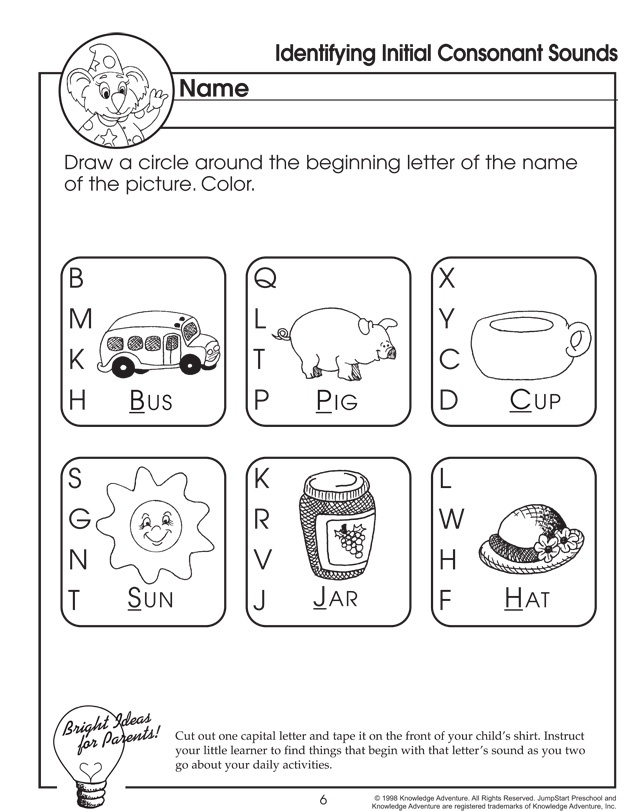 nine0004
nine0004 Games and games
There are many games to help you consolidate your knowledge. We will give a few examples.
1. Find the words with the right sound . You need to prepare cards that show different objects. The child must choose among them those in which there is a studied sound. First, you can simplify the task: ask him to find words that begin with this letter.
2. Catch the sound . To stretch a little, mother and child walk around the room. Mom calls different words. As soon as the child hears a word with the desired sound, he stops and claps his hands. nine0004
3. Think of the word . Ask your child to come up with as many words as possible with a certain sound. You can do this in turn, for example, first the mother calls the word, then the baby.
The task needs to be complicated, that is, the sound can be not only at the beginning of the word, ask him to come up with a word in which this sound will be at the end or in the middle.
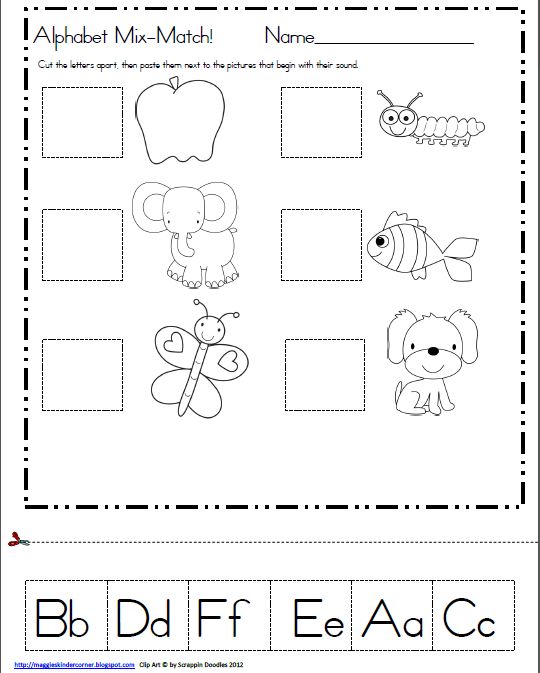 For example, you are learning the sound "a". First, you select words that begin with this letter - apricot, orange, then those that end in "a" - Moscow, jellyfish or contain the sound "a" in the middle - mosaic, eye. nine0004
For example, you are learning the sound "a". First, you select words that begin with this letter - apricot, orange, then those that end in "a" - Moscow, jellyfish or contain the sound "a" in the middle - mosaic, eye. nine0004 4. Determine where the sound is hidden. You need to draw a simple word scheme: three squares connected to each other. Each square denotes its own: the beginning of the word, the middle and the end. Put this word scheme in front of the child, give him a chip.
You name different words, and he must show on the diagram where the sound that you pass is located. For example, if you called the word "watermelon" (you can show a picture), the child must put the chip in 1 cell, and if the word "fox" - then in the 3rd cell. nine0004
5. Ball game . An adult throws a ball to the child and calls different words. If they have a letter being studied, he catches the ball, if not, then he does not catch it. To begin with, you can use words in which this letter is at the beginning, then complicate the task, that is, it can be in the middle or end.
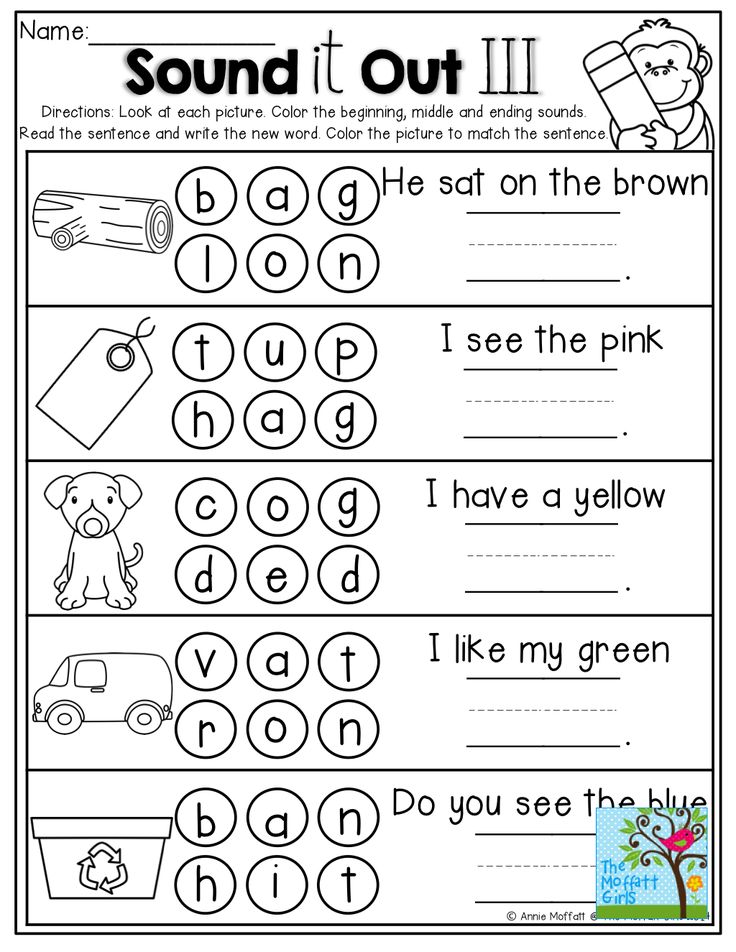
Author's methods of learning the alphabet
There are several recognized methods of teaching reading, each of which can be devoted to a separate article.
Zaitsev's cubes
The basis of Zaitsev's technique is a game, that is, children just play with cubes (there are 52 cubes of different sizes in the set) and at the same time learn to read without any effort. These games can be started from 6-12 months old, but up to 2 years old they are used like regular blocks, and children after 2 years old can start making words.
Zaitsev's main unit is a warehouse. It can consist of a consonant and a vowel, or a single letter. The basis of this method is the warehouse principle of reading. In addition to cubes, a large warehouse table is also used. nine0004
This technique has many advantages, the main of which is that any child can be taught to read. But there are also disadvantages, for example, over time, children will have to be retrained, because they remember that letters are indicated by one color, and the teacher enters his own colors, for example, red is a vowel.
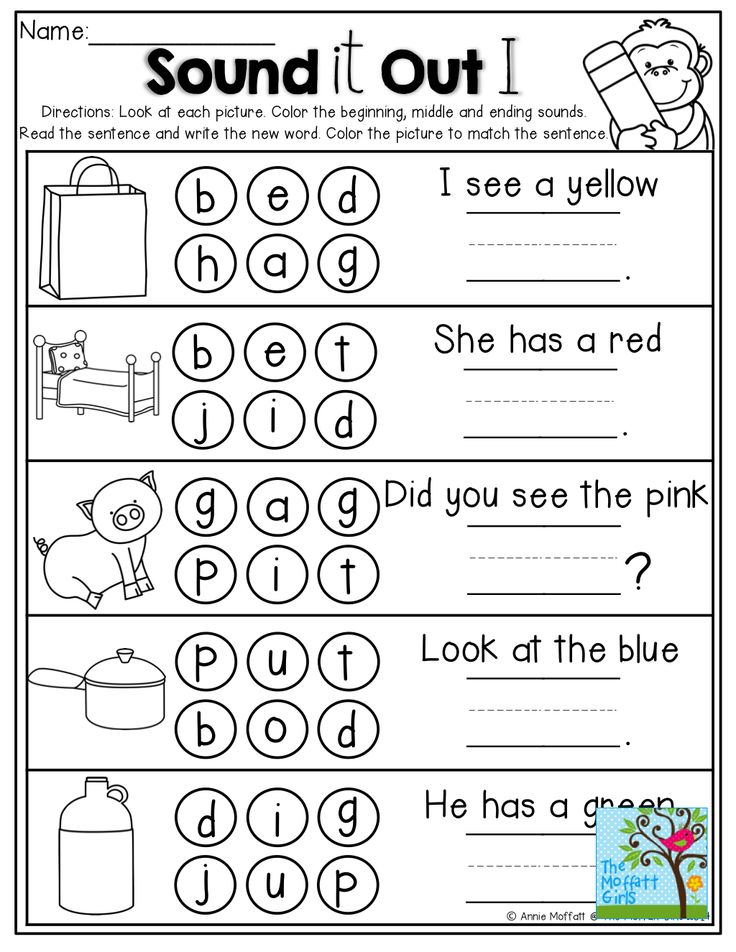 In addition, the child is used to the fact that words are divided into warehouses, and not into syllables. Yes, the benefits are very expensive.
In addition, the child is used to the fact that words are divided into warehouses, and not into syllables. Yes, the benefits are very expensive. Doman's cards
Neurosurgeon Glen Doman developed his technique for children with CNS disorders, but then it was also used to teach healthy kids. He recommends teaching children to read not by letter, but by words, since letters mean nothing to him, and words have real designations. nine0004
To do this, whole words are written on the cards in large print (at least 7-10 cm), for example, “mother” or “dad”, which must be quickly shown to the child, voicing each word. With the help of this method, even a small child can be taught to read. Training is necessarily carried out at an early age; after 5 years, the Glenn Doman method no longer works.
Olga Soboleva's Methodology
The principle of this training is based on the "two-hemispheric" work of the brain. The teacher tries to use the dominant type of memory, that is, the material is divided into 3 groups: for kinesthetics, visuals and auditory.
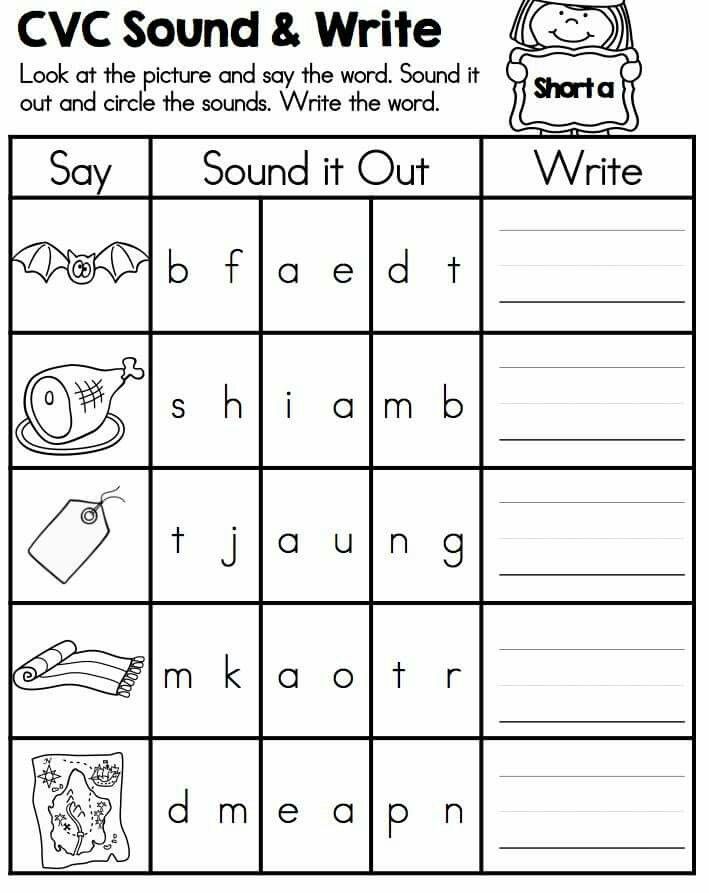 nine0004
nine0004 Many of its techniques are also used by ordinary teachers when teaching traditional methods, so that children would be more interested in studying. Well suited for creative children and parents, it is not recommended for families where logic and structure come first.
Polyakov's method
Its author came up with 7 steps of learning to read, 70 lessons in total. Each lesson is detailed. They are held in the form of a game, take no more than 10 minutes. Stages 1 and 2 are the study of letters, warehouses, reading in warehouses. nine0004
Sergey Nikolaevich Polyakov himself, unfortunately, is no longer alive, but his work was continued by his son, as well as teachers who use this method. If you wish, you can purchase books that describe in detail how to conduct classes, as well as video files with examples of classes.
Creative exercises
To reinforce the acquired knowledge, it is useful to conduct creative activities.
 For example, you can make a beautiful alphabet together. We studied the letter - cut it out of cardboard. It is better to choose a dense material. If it is difficult for the baby, you can help him, and the child will decorate - attach beads, groats, sequins, beautiful fabric, etc. to it.
For example, you can make a beautiful alphabet together. We studied the letter - cut it out of cardboard. It is better to choose a dense material. If it is difficult for the baby, you can help him, and the child will decorate - attach beads, groats, sequins, beautiful fabric, etc. to it. When you have collected the entire alphabet, you can decorate the children's room with it by connecting the letters into garlands, or hang it on the Christmas tree instead of toys. You can cut out paper blanks for letters, and the child must fold the whole letter from these parts.
Preschoolers love to draw and color. You can buy coloring books with letters, he will color them and remember what kind of letter it is. Or ask him to draw with felt-tip pens on paper, with chalk on a blackboard what you have already studied. But at this age, children should not be taught writing, this should be done by teachers in elementary school. The only thing you can teach your baby is to write in block letters.
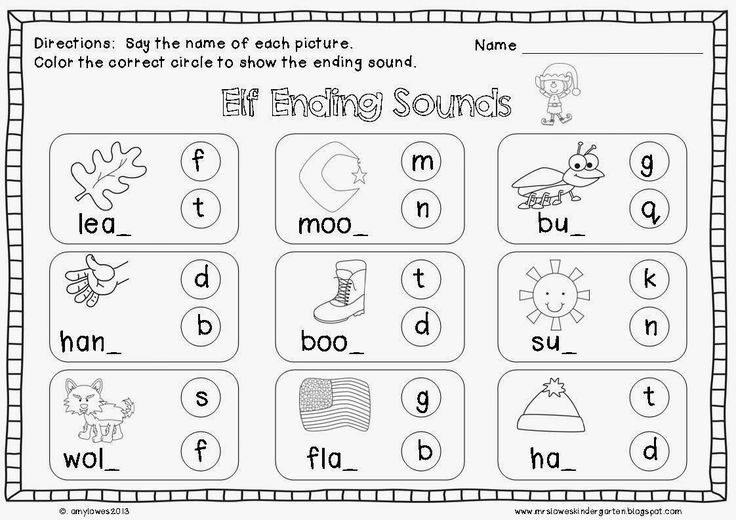
Learn more

